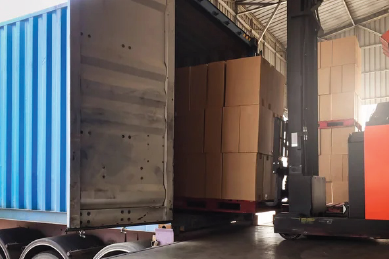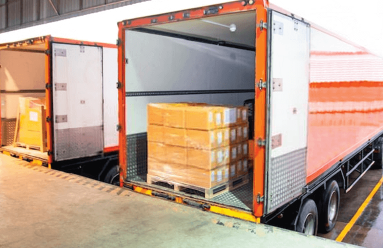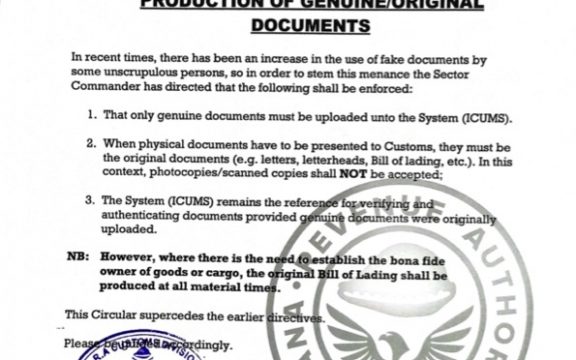Cubic Meter Measurement (CBM) is one of the most important activities of the import and export sector which shippers are expected to be very knowledgeable about if they are to derive maximum benefits from their business operations. This is because CBM plays a crucial role in determining the cost of transporting goods from a point of origin to the point of destination in international trade.
Importing and exporting by sea can be done in three (3) ways:
- Bulk shipment, where cargo is loaded in loose form onto vessels. This is usually the case with grain shipments such as rice and wheat.
- Full Container Loads (FCL), where the shipper pays for a full container to transport their goods.
- Where cargo is in smaller quantities/volumes i.e., too small for 20-footer or 40-footer containers, they are shipped as Less than Container Loads (LCL). Shipping companies combine multiple loads from various shippers to create a consolidated shipment and each individual pays for the volume of goods they ship. To determine the amount to be paid by each shipper, the CBM is used to calculate the applicable charges.
What is CBM?
CBM is the measurement of the volume of a shipment. It determines how much space cargo will take up on a ship, aircraft or truck, and that informs how much it will cost to transport that volume of shipment. CBM is thus, the mechanism or formula used to calculate the volume of goods transported by any mode of transport.
Calculating the CBM
Calculating the CBM of goods can be simple and straightforward. For goods in containers of regular shape such as a cube or cuboid containers, its length, width and height in meters are multiplied to arrive at the CBM of the package to be shipped.
In the instance where the cartons used for shipment are not of the same size, the shipper or consolidator must calculate the CBM for each carton by using the same formula. To measure the CBM of such a package, the shipper needs to measure the longest length, longest width and longest height of the container, then multiply them. The sum of the CBM for the shipments provides the total CBM for the container. For instance, the CBM of a pallet of goods that measures 2 meters x 1 meter x 1 meter will be 2.
The calculation for irregular containers requires a different approach. On some occasions, the shipping lines use pallets to calculate the CBM of irregular objects. In this case, the shipping line would charge a specific amount per pallet. For instance, if a shipping line charges $20 per pallet for goods of irregular shape, the shipper will be required to pay $100 if the goods occupy 5 pallets in the container.
Another approach used by shipping lines to calculate the CBM of irregular-shaped shipments is the use of boxes of regular shape. The consignment is put in boxes of regular shape, and then the CBM of the box is calculated using the regular formula. An example in this instance is the calculation of CBM for office supplies like notebooks, pens, and files.
 Some Consolidators and De-consolidators in Accra who spoke to the Shipping Review asserted that although the use of CBM is mostly associated with Less Container Load (LCL), some of the Shipping Lines use the weight of the cargo instead, in the instances where the consignment is heavy. This means a Shipping Line is likely to charge a large but light-weight consignment using the CBM, and then use the weight of heavy cargo to determine the charge for shipping it. According to the Consolidators and De-consolidators, most shippers are not aware of this difference in the determination of charges, and it has become one of the major challenges they face in their business.
Some Consolidators and De-consolidators in Accra who spoke to the Shipping Review asserted that although the use of CBM is mostly associated with Less Container Load (LCL), some of the Shipping Lines use the weight of the cargo instead, in the instances where the consignment is heavy. This means a Shipping Line is likely to charge a large but light-weight consignment using the CBM, and then use the weight of heavy cargo to determine the charge for shipping it. According to the Consolidators and De-consolidators, most shippers are not aware of this difference in the determination of charges, and it has become one of the major challenges they face in their business.
Impact of CBM on Freight
The volume of cargo or CBM has an impact on freight charges. It goes beyond the mere cost of transporting goods from a point of origin to the point of destination, and it is for this reason that a typical freight quote includes many other charges and surcharges. On many occasions, all or some of these charges are determined on the basis of CBM. These include Terminal Handling charges, local taxes, special charges, and Inland Haulage charges among others.
Terminal Handling charges are costs associated with the use of equipment and property owned by terminals at the origin and destination of a cargo, as well as the use of labour provided for the loading and offloading of shipments and their transportation inland. Inland Haulage Charges are costs associated with the movement of cargo from the inland container depot or container freight station to the port of loading or vice-versa.
Terminal operators use forklifts and other equipment and logistics to aid the movement of very heavy cargo. A lot of manpower is used to inspect, process and clear consignments. All these services are factored into the freight charges.
For all the reasons, it is evident that the higher the CBM, the more likely that a higher freight charge would apply.
 Conclusion and Recommendations
Conclusion and Recommendations
From the above insight into the determination and use of CBM, it is evident that CBM has a huge impact on the overall cost of freight, and shippers need to pay critical attention to it. Knowledge and understanding of the calculation of CBM helps to reduce the cost involved in the import and export business. Shippers who are conscious of CBM consciously package their goods in a way that makes the best use of space, and are able to calculate the volume of their goods to determine when they are over-charged by the shipping lines.
To avoid challenges with CBM, shippers need to:
- insist on a contract or agreement.
- ensure that they obtain documentary proof of the contract from the supplier.
- pay attention to the terms and conditions of the consolidator.
- enquire about the charges that apply to their goods per cubic meter of space in the container.
- know the shipping Agent’s physical office.
- check the duty value of the goods by providing details such as Net weight, quantity of goods, Free on Board (FOB), Cost Insurance and Freights (CIF), Harmonized System Code as well as country of origin on the ICUMS platform.
The onus lies on a shipper to take an interest in the calculation of the CBM of their goods before transporting them to make their business a cost-effective venture.
By: Nathaniel Nartey









